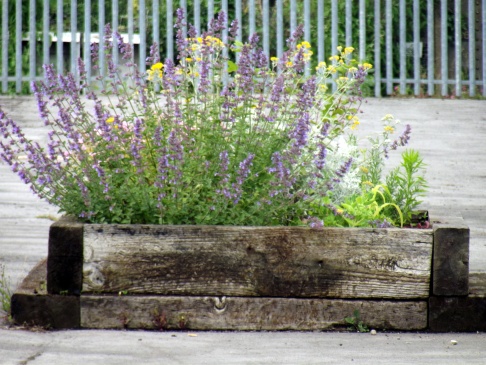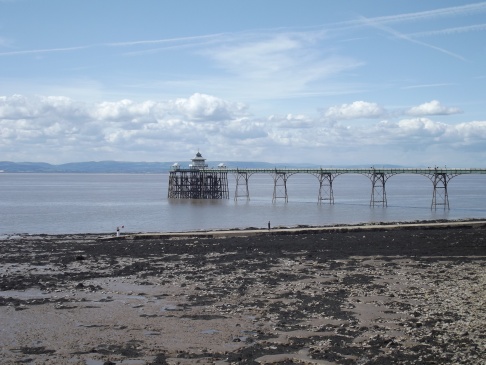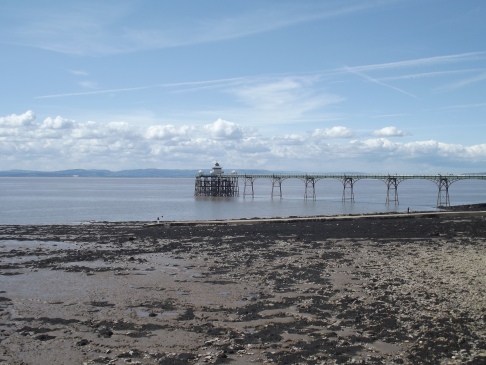For this assignment, you were to choose at least 8 pairs of contrasts from the list below.
This assignment is not contrast in a restricted, purely photographic sense. It is visual contrasts you had to look for. A lead weight may be heavy, but why does it look heavy. If it was painted pale yellow, would it still look heavy. How does this affect your response.
You had to choose at least eight pairs of contrasts from the list below. You were asked to note your thoughts along the way.
After looking at the table of contrasts to choose from, I decided to note down the pairs that seemed interesting to me.
I decided to choose:
Large/Small
Sweet/Sour
Black/White
Smooth/Rough
Pointed/Blunt
Light/Heavy
Light/Dark
Many/Few
After noting them down, I then had to think of possible subjects or locations which would represent the contrast I was trying to show. I did a bit of research (not much) mainly on google. I just typed in eg. light photography, smooth photography but I realised I didn’t want to copy what other people’s interpretations are. I wanted to use my own interpretation of the contrast. I jotted down a handful of items or places I would use next to the contrast. Once done, I narrowed it down to one and began choosing how I would shoot the subject.
For this assignment, I used my tripod for some of the images. I also processed the final images on Google Picasa. I will add details under each photograph.
Final Results:
Large/Small
Large:
I recently bought this beautiful statue of a large mother cat with a kitten. I didn’t want to go with the generic ‘large’ photograph of items such as buildings, I wanted something different. I realised that this figure shows Large and Small, even though this was unintentionally. Because this sculpture is made from a beautiful shiny bronze like material, I didn’t want to place it on a plain white or plain black background, I wanted something shiny but not too shiny to take the focus off of the statue. I therefore used a piece of silver veil netting. I decided to centralise the subject and keep it quite close to the camera as I wanted to capture the size of the larger cat. I processed this image on Google Picasa and cropped the image, I also lightened it a small amount.
Small:
I realised I had some smaller cat figures which would work perfectly for the small contrast. I wanted to tie the cat theme in with both images as this would show the two contrasts easier. I decided to add some foreground to this image as I wanted to focus on how ‘small’ the figures were. If I zoomed in and focused on them, it would have taken the emphasis on them being small away. I processed the image in Google Picasa, I cropped the image and lightened it a small amount.
Sweet:
My mum recently bought me this union flag cake stand. I knew this would be perfect for the ‘sweet’ contrast. I decided to go out and buy some delicious cup cakes and chocolate in order to photograph them on the cake stand (and eat afterwards). I used Google Picasa to process the final image. I added a sepia tone to the image. I wanted to make it look old-fashioned.
Sour:
The first thing you think of when asked to choose something sour would be a lemon. I decided to go with it and went and bought a lemon. I cut the lemon open and cut a few slices. I photographed them in daylight, however, it didn’t have the bright yellow colouring I had wanted. I wanted the lemon to be bright yellow. Mine was more pale and washed out. Too much sunlight I think. Therefore, when processing in Picasa, I decided to add a ‘1960’ tone to the image. It makes your image more yellow and saturated.
Black:
When I had to think of a subject to represent the contrast Black, I found a jet black cat figure in my house. I wanted something completely black and this figure was prefect. I edited the image on Picasa, and added a Black and White colour tone to the image, mainly so the figure could stand out more against the veil background.
White:
For this contrast I wanted something predominantly White. I have a white /off white model Chevrolet car.
Smooth:
For Smooth my mum has an old piece of polished wood. I wanted something which, when viewed, would allow the viewer to almost feel the smoothness of the object.
Rough:
For Rough I wanted something with a lot of detail to it. The same old piece of wood, when turned over had a lot of detail and roughness to it. I wanted something which, when viewed, would allow the viewer to almost feel the roughness of the object.
Pointed:
I decided to use extra sharp knives for this contrast, they were extremely pointed and sharp.
Blunt:
Keeping the knife theme, I decided to photograph a child’s blunt knife. I used the same piece of wood as a stand.
Light:
I have a beautiful white dreamcatcher with feathers and beads. I realised this would be great for the ‘light’ contrast. I was planning on photographing just one feather, but after seeing my dreamcatcher, I realised this would have more effect. I processed this on Picasa and added a vintage colouring to make the image look almost ‘floaty’ and ‘dream like’.
Heavy:
For heavy, I decided to photograph weights stacked ontop of eachother. Having more than one would have more of an impact of weight.
Light:
For light, I wanted to use a row of candles, I wanted as much light as possible, but I didn’t want to use a subject like the sun. I wanted something different. Therefore I used candles.
Dark:
For dark, I decided to use the same set up with the candle’s, however, I blew a few out and photographed the smoke rising. With less light and the smoke, it made the final image look ‘dark’ and ‘mysterious’
Many:
Rather than using items from around the house, I decided whilst out and about, to photograph an amazing scene of boats in the dock.
Few:
I then photograph a few boats, to contrast between many and few.
Contrasts in One Picture:
To express two contrasts in one picture. When photographing Light/Dark with candles. The only way I could photograph them was in a dark room. I switched the lights off and drew the curtains. To add more ‘Light’ I used more candles, and when I wanted the effect of ‘Dark’ I blew some candles out. However, there are both contrasts in the ‘Light’ photograph, mainly because the background is black whith the contrast of the light from the candles.
Conclusion:
This assignment could have had some more work done to it. I didn’t really plan to photograph locations or subjects outside. This would deffinately be something I would change. I would go out and find buildings or locations etc to photograph and represent the given contrasts. However, I am happy with how my photographs have come out. I could have changed a few of them, some were a bit light or dark. It took me a while to get the candle photographs right, I then had a lot of photographs to pick through until I found the right one. However, after only having less than 1 month to do the entire 1st assignment and projects, I believe it has gone well so far.
Now I just have to wait for my Tutor’s response and I will post the feedback here.
Tutor’s Feedback:
Overall Comments
Thank you for returning Assignment One to me, you have kept up with the deadline really well which gives me lots of faith in your assignments and course being completed in good time. Your learning log looks great and gives me a good insight into your thoughts on the assignment and images as well as of the process of your studies.
Pointers for the next assignment
Work on your composition skills more, this will come naturally from the next assignment. I look forward to seeing Assignment Two.
Large / Small
I like your image for large, it shows creativity in trying to think outside the box for a subject matter for your images. You have shown here a good understanding of composition, with the focal point (the cats faces) being placed off centre to create a more dynamic composition.
Your image for small is not so successful in my opinion in that there is nothing in the image to give a sense of scale and to show that these cats are small. The composition is also very central, this could be improved perhaps by considering the rule of thirds and placing the cat on one of these lines.
Sweet / Sour
The colours in the Sweet image look great, they give a really Vintage / Retro feel as you intended. The viewpoint shows the patterns on the cake stand well to this feel.
I think that your image for sour could have been more carefully considered. Maybe going in really close to a lemon cut in half and filling the frame with it; maybe showing someone’s reaction to eating the sour lemon. I agree about the yellow not being vibrant and feel it still could be mistaken for an orange. Maybe have a play with the hue as well as brightness and saturation.
Black / White
This image continues to show detail in a black object which can be hard to do, often it will be completely black and lose highlights and shadows but you have avoided this problem here. I think again going in closer and filling the frame with a certain part of the cat e.g. face and paws you could improve the composition and make it a more interesting image.
I think the setup for white has been very effective. I like the use of shallow depth of field here with the lights being pin sharp and gradually going out of focus towards the back of the car.
Smooth / Rough
I think this image is good to show the smoothness of this polished wood, I like the fact it also shows the texture of the wood and is not completely smooth. I like the viewpoint looking across the wooden surface and the sense of perspective this gives. You have also captured the rough texture if this wood very well, there is a lot of form and depth to this image due to the lighting.
Pointed / Blunt
I like the props used for this image but feel that arranging them differently may lead to a more successful composition, I feel your eye gets a bit stuck on the large knife and just looks up into the image then back down and out again. Maybe using this knife to lead your eye into the image might be better, for example placing it more angled off to the left to lead your eye up diagonally and then down the other two knives?
Blunt works very well in contrast with the pointed image. I think again the composition could be worked on a little, it is at a slight angle but maybe really having it cut across the image to create a really strong diagonal and a more dynamic composition.
Light / Heavy
I think that this is an interesting image and gives a good sense of lightness. The image for heavy also works very well. I like the choice of background for the image, the angle you have shot it at and the composition all work very well.
Light / Dark
I like the way that you have chosen to use different coloured candles here to add interest to the image. I like also the arrangement of the candles in a long line. I think though that the composition could be more carefully considered.
I think the image for dark is great. It is imaginative, mysterious and well composed with the unlit candles leading your eye into the lit candles and the smoke.
Many / Few
Wow, there really are many boats here! I like the use of a close up boat as the subject then the smaller boats filling the whole of the background of the image. They give the impression of going on for miles! In strong contrast you have the image of a few boats, they seem even more few from the fact that they are stranded on a low tide. Excellent couple of images here.
Light and Dark
Again, it would be nice to see the line used in an alternative way in the composition here. I like the darkness of the shadows cast by the flames and the different colours within the image.
I have taken my tutor’s advice, and have changed the images she recommended. I have included the new photographs below.
Changes: I took my tutors advice, and I have changed some of my final images. Below are the new, updated images.
Small: “Your image for small is not so successful in my opinion in that there is nothing in the image to give a sense of scale and to show that these cats are small. The composition is also very central, this could be improved perhaps by considering the rule of thirds and placing the cat on one of these lines.”
Sour: “I think that your image for sour could have been more carefully considered. Maybe going in really close to a lemon cut in half and filling the frame with it; maybe showing someone’s reaction to eating the sour lemon. I agree about the yellow not being vibrant and feel it still could be mistaken for an orange. Maybe have a play with the hue as well as brightness and saturation.”
Black: “This image continues to show detail in a black object which can be hard to do, often it will be completely black and lose highlights and shadows but you have avoided this problem here. I think again going in closer and filling the frame with a certain part of the cat e.g. face and paws you could improve the composition and make it a more interesting image.”
Pointed: “I like the props used for this image but feel that arranging them differently may lead to a more successful composition, I feel your eye gets a bit stuck on the large knife and just looks up into the image then back down and out again. Maybe using this knife to lead your eye into the image might be better, for example placing it more angled off to the left to lead your eye up diagonally and then down the other two knives?”
Blunt: “Blunt works very well in contrast with the pointed image. I think again the composition could be worked on a little, it is at a slight angle but maybe really having it cut across the image to create a really strong diagonal and a more dynamic composition.”
Light: “I like the way that you have chosen to use different coloured candles here to add interest to the image. I like also the arrangement of the candles in a long line. I think though that the composition could be more carefully considered.”















































































































